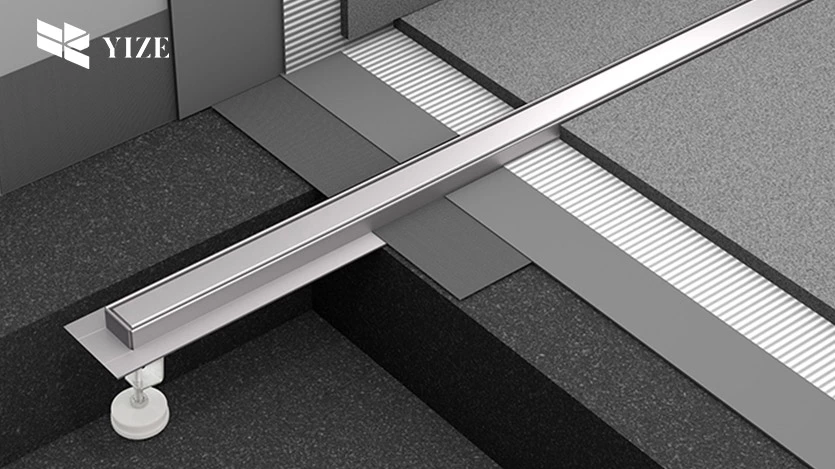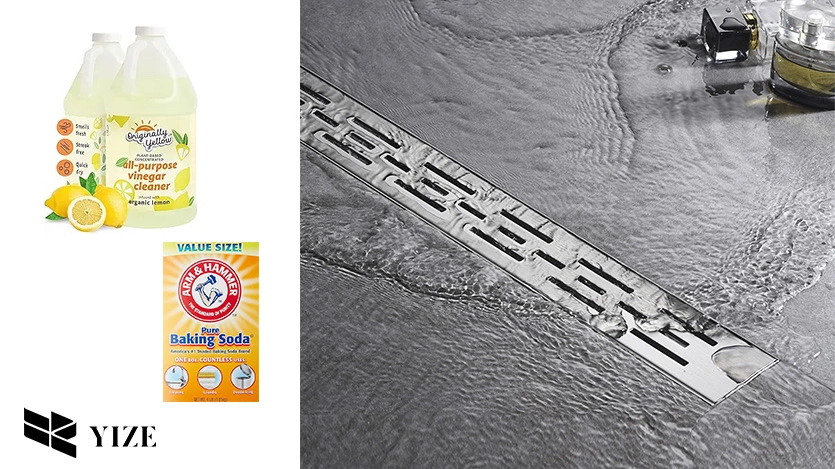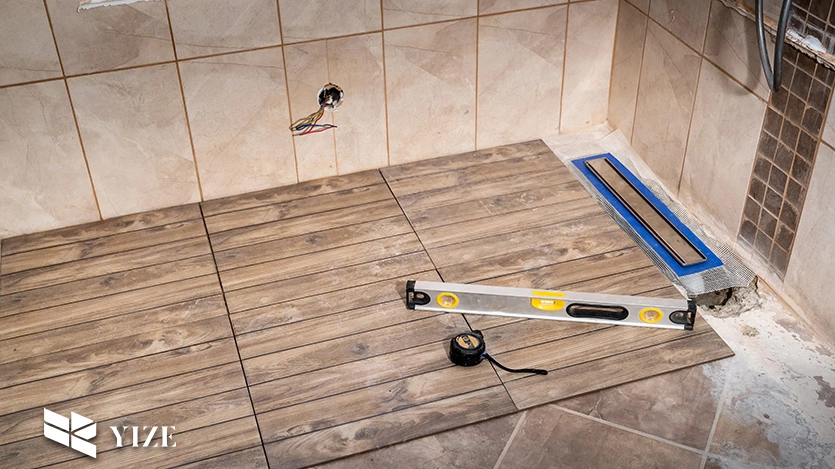
I. Introduction
Floor drains are a basic part of indoor plumbing. Maintaining hygiene, preventing flooding, and controlling smells depend on them greatly. To help you better understand and maintain floor drains, below we address eleven often-asked questions about them.
II. How Often Should You Pour Water Down a Floor Drain?
A trap found in floor drains holds water to stop sewer gases from getting into your house. Especially in seldom-used drains, the water in the trap can evaporate over time. To keep the trap working every two to four weeks, pour water down the floor drain.
You can pour roughly one gallon of water into floor drains in seldom-used spaces, such as utility rooms or basements, monthly. By forming a thin seal on the water’s surface, a tiny amount of vegetable oil added later can slow down evaporation.
III. How Do You Clean Bathroom Floor Drains?
Bathroom floor drain cleaning remains crucial to stop drain clogs along with bad odors while protecting against overflowing water. Here’s a step-by-step guide:
- Remove the Cover: The floor drain cover requirements a screwdriver to be taken off.
- Clear Debris: For the removal of visible dirt and hair the drain requires examination through a glove or drain hook.
- Flush with Hot Water: Hot water stream should flow through the drain to break loose old sediments.
- Use a Cleaning Solution: First, make a solution of baking soda and vinegar then add it to the drain before allowing it to rest between 15-30 minutes. Flush with more hot water.
- Scrub the Drain Cover: Brush cleaning should precede putting the cover back into place.
Bathroom drainage works best when cleaning occurs every few months.
IV. What Is the Difference Between a Floor Trap and a Floor Drain?
A floor trap functions as a plumbing unit which incorporates a water barrier system for preventing sewer gas intrusion into buildings. Such fixtures serve functionality needs by finding placement beneath floor drains.
Floor drains operate as visible floor openings through which drainage water is routed into the plumbing system. As part of the floor drain system the floor trap offers vital water sealing capabilities that enable hygiene maintenance and odor control.
V. Where Is the Best Location for a Floor Drain?
A floor drain’s location depends on how rooms function in addition to which direction the water flows. Here are common locations:
- Bathrooms: Near showers or tubs for efficient water drainage.
- Laundry Rooms: Washing machine overflows or leaks can be directed into the specific drainage system underneath.
- Kitchens: Spills often happen at locations close to kitchen sinks or dishwashing areas thus these areas require proper drainage as an essential form of protection.
- Basements: Storerooms positioned at floor levels need drainage installed for handling water that leaks or floods from sources.
The correct installation position leads to proper drainage that prevents flooding vulnerable areas.
VI. How Do You Maintain a Floor Drain?

Annual maintenance tasks ensure effective functionality of your floor drains. Here’s how to keep them in good condition:
- Flush with Water: Monitoring water flow into your drain with periodic pouring helps keep trap seals free from dry conditions.
- Clean Regularly: Regularly removing debris from drain covers stops blocks in pipes.
- Use Drain Cleaners Sparingly: Strong chemical solutions should stay away from pipes since these products might harm their structure. You should select baking soda and vinegar as your natural cleaning solutions.
- Inspect the Drain: Look for signs that your pipes are corroded or damaged and handle all repair work straightforwardly.
Routine maintenance effort helps stop expensive future repairs from happening.
VII. How to Stop Floor Drain Smell?
Unpleasant odors in floor drains begin when the trap dries up or contains debris. Here’s how to resolve and prevent the issue:
- Check the Trap: Check that your drain trap properly works by adding approximately a gallon of water.
- Clean the Drain: First clean away any debris and complete the cleaning action by using a selected solution.
- Use a Sealant: For evaporation control apply a tiny amount of mineral oil or vegetable oil.
- Ventilation: Adequate ventilation of your plumbing system will prevent the emptying of your trap due to negative pressure.
Drain maintenance oversight helps maintain your drain systems below odor levels.
VIII. How Do You Remove Hair from Floor Drains?
The presence of trapped hair stands as the main reason floor drains throughout bathrooms become obstructed. Follow these steps:
- Remove the Cover: You can free the drain cover by using a screwdriver.
- Use a Drain Hook or Snake: Insert the tool into the drain so you can retrieve hair along with other buildup material.
- Flush the Drain: Using hot water or vinegar solutions will finish removing built-up residues from the drain.
- Install a Hair Catcher: A hair trap installed across the drain cover will stop potential clogging occurrences.
Regular inspections combined with hair removal activities enable you to maintain drain clarity.
IX. Do All Bathrooms Need a Floor Drain?
A floor drain remains an essential addition to any bathroom even though legal requirements may vary. Buildings without floor drainage systems develop more water damage and encounter standing water emergencies whenever pipe leaks or spills occur. Standard modern plumbing design now incorporates floor drains as mandatory safety components for improved hygiene.
X. Do Floor Drains Require a Trap?
Drains located on your bathroom floor need a trap system as an essential component to stop sewage odor problems from entering your house. Water held in the trap device functions as a plumbing barrier which blocks unpleasant smells and hazardous gases. Second traps combined with vents are necessary for increased efficiency under particular local plumbing standards.
XI. How to Measure Floor Drain Size?

Determination of floor drain dimensions follows a basic procedure. Follow these steps:
- Measure the Diameter: A tape measure should be used to determine an opening diameter which must consider the complete drain cover’s edges.
- Check the Outlet Pipe Size: Take measurements of the outlet pipe diameter which sits directly under the drain.
- Note the Depth: Guests the total measurement for the drain assembly when seeking replacement parts.
The success of floor drain installations and replacements requires precise measurement for achieving proper fitting results.
XII. What Is the Difference Between Area Drain and Floor Drain?
Nature parks and large paved areas use area drains outdoors to trap and manage water runoff from outside surfaces.
Inside spaces gain use from floor drains which normally appear in bathrooms together with laundry rooms and kitchens as well as basement locations. The design of floor drains combats both flooding in buildings together with animal odors through its trap mechanism.
XIII. Conclusion
Floor drains form an essential component for creating interior spaces that remain both secure and odorless as well as hygienic. When homeowners handle proper maintenance with regular cleaning procedures and proactive issue detection floor drains can maintain effective operations throughout several years. Knowledge about fundamental principles protects your plumbing system as you handle issues related to drain smells, clogs or new installation decisions.
Frequently Asked Questions (FAQs)
Q1: Can I use bleach to clean my floor drain?
Indeed, but dilute the bleach with water to prevent pipe damage. Use it sparingly; then, rinse very well.
Q2: What is a backwater valve in a floor drain?
A backwater valve stops wastewater from running back through the drain into your house.
Q3: Can I install a floor drain myself?
Hiring a licensed plumber is advised since appropriate installation calls for knowledge of local plumbing codes and experience.
